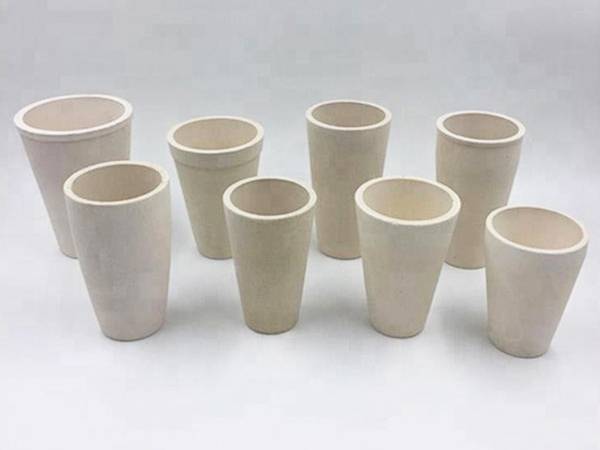



Premium Fire Assay Crucible Mfrs | Precision Made
Delve into the world of fire assay crucible manufacturers—exploring core technology, manufacturing processes, technical parameters, and application superiority in the modern metallurgical and assay sectors.
1. Overview of the Fire Assay Crucible Industry
Fire assay crucibles, also known as fire clay crucibles or clay crucibles, are specialized refractory container111s used primarily for the quantitative determination of precious metals (such as gold, silver, platinum) by fire assay. Their use is pivotal in the mining, metallurgy, and analytical laboratory industries. As of 2023, the global fire assay crucible manufacturers sector was valued at $128 million, growing at a CAGR of 5.2% (MarketResearchFuture, 2023).

2. Major Global Fire Assay Crucible Manufacturers: Parameter Comparison
| Manufacturer | Main Location | Crucible Material | Capacity Range | Typical Life Cycles | ISO/ANSI Standards | Year Established |
|---|---|---|---|---|---|---|
| Fiza Chemical | China | High Alumina Fire Clay | 20g – 150g | 25-30 cycles* | ISO 9001, ISO 2008 | 1998 |
| Vesuvius | UK/Global | Silica, Fire Clay | 15g – 120g | 18-24 cycles | ISO 9001 | 1916 |
| Super Assay | India | Alumina/Clay Blend | 30g – 100g | 15-20 cycles | ANSI/ ASTM-C20 | 2004 |
| SRS | USA | Fire Clay, Quartz | 25g – 85g | 15-25 cycles | ISO 9001 | 1994 |
3. In-Depth: Fire Assay Crucible Technical Parameters & Visual Analysis
Main Technical Indices (Fiza Chemical’s Fire Assay Crucible vs. Industry Avg.)
| Parameter | Fiza Chemical | Industry Avg. |
|---|---|---|
| Max Working Temp. (°C) | 1350 | 1300 |
| Thermal Shock Resistance (Cycles) | 30 | 22 |
| Apparent Porosity (%) | 18 | 21 |
| Al₂O₃ Content (%) | 51 | 44 |
| Bending Strength (Mpa) | 18.5 | 14 |
| Water Absorption (%) | 14.7 | 17.2 |
Al₂O₃ 51%, SiO₂ 38%, Others 11%
4. Fire Assay Crucible Manufacturers’ Process Flow (with Diagram)
- ✓Raw material blending: Strictly selected fire clay, with high-purity Al2O3 content.
- ✓Forming: ISO-certified axial pressing by automated CNC and rotary equipment for homogeneity and structural strength.
- ✓Controlled drying: Ensures minimal microcracking and optimal green-body strength.
- ✓High-temp firing: Sintered at 1250–1350°C for densification, porosity reduction.
- ✓Quality control (QC): Each batch tested for mechanical/bending strength, porosity (ASTM-C20), chemical composition (XRF), and dimensional accuracy per ANSI/ISO standards.
Fiza Chemical integrates CNC post-processing for dimensional tolerance ≤0.5mm, achieving superior fit for automated assay lines and robotic setups—a unique technical advantage among top fire assay crucible manufacturers.
5. Material Science & Technology: Why Fire Clay Crucible Excels
- High-alumina fire clay: Increases thermal endurance—sustaining repeated cycles at 1250°C+.
- Fine-grained matrix: CNC-forming ensures low-porosity, improved corrosion resistance to fluxes and lead oxide, reducing metal loss.
- Strict compliance: Conformity with ISO 9001:2018, ASTM C20 (porosity test), ANSI Z41 (safety/consistency) standards.
- Longer usage life cycle: Up to 30 assay firings per crucible, minimizing downtime and cost.
- Eco-optimizations: Lower energy consumption/firing emissions per unit via efficient firing protocols.
6. Typical Application Scenarios: Fire Assay, Metallurgy, Petrochemical, and More
Precious Metal Mining Labs (Gold, Silver, Platinum Group)
- High throughput fire assay lines demand crucibles that withstand aggressive flux/lead oxide attacks.
- Automated dosing arms benefit from precision CNC-formed fire assay crucible rims for no-leak operation.
Refineries & Smelters
- Continuous batch refining (e.g., 24/7 cycle) in base metal and PMG plants;
- Low water absorption reduces metal contamination and optimizes gold/silver recovery yield.
Environmental Laboratory Analysis (Soil/Water/Mining Samples)
- High purity requirements: Clay selection and processing meet multi-contaminant test standards.
Universities & Research
- Customsizable fire assay crucible dimensions/designs for experimental assay protocols.
- Client: Major West African gold miner, annual output >120 tons Au
- Application: Automated bullion assay line
- ROI: Average crucible lifespan increased from 19 to 28 firings; loss to PbO reduced by 40%
- Feedback: “Fiza’s fire clay crucible batches remain dimensionally perfect and crack-free. Yields are higher, with less downtime for cleaning and changeover.”
- Reference: Certified by SGS Africa, full compliance to ISO 9001/ASTM-C20 (audit trail available upon request)
7. Customization Capabilities: Fire Assay Crucible Dimensions, Logos & Technical Specs
Modern fire assay crucible manufacturers offer a wide portfolio for custom solutions:
| Parameter | Standard Range | Custom Options |
|---|---|---|
| Volume/Size | 20g, 30g, 40g, 50g, 65g, 100g, 150g | Any up to 250g (special order) |
| Wall Thickness | 8-11 mm ±0.3mm | 4–16 mm (tolerance ±0.15mm) |
| Base/Shape | Flat, round, conical | Custom bases, reinforced edges, stackable profiles |
| Material Markings | Blank or standard codes | Laser logo, lot trace, RFID tagging |
| Color/Glaze | Natural gray/white | Black, blue, custom glaze anti-penetration |
The option for client branding (laser etching, batch traceability), customized shapes (e.g., for robotic grippers), and specialty clay blends (e.g., higher Al₂O₃ for platinum work) sets innovative fire assay crucible manufacturers apart in global supply chains.
8. After-Sales Support, Lead Time & Quality Commitment
- Standard lead time: 10–18 working days (custom: up to 4 weeks; expedited upon request)
- Warranty: Batch warranty against manufacturing defects; third-party conformity test (SGS, Intertek) available
- Technical support: 24/7 online, on-site technical guidance for high-throughput clients
- Documentation: Full ISO certificate, batch test reports, and import/export compliance file
9. Fire Assay Crucible Manufacturers: FAQ & Technical Terms
Industry Authority, Certifications & Clientele
- ISO-certified: Fiza Chemical and other top fire assay crucible manufacturers meet ISO 9001:2018 QC system requirements.
- Third-party audited: Supply contracts routinely verified by SGS, Intertek, and Bureau Veritas for chemical and performance compliance.
- Global clients: Serving renowned gold/silver refineries, state labs, and mining majors in 62+ countries (Africa, Americas, EU, SEA).
- Citations: Referenced by industry literature (“Practical Gold Analysis”, J.B. Newman, Analytica Chimica Acta).
Fire Assay Innovations for Modern Mining Labs, Analytica Chimica Acta
Fire Assay Market Growth Analysis 2023–2031
Industry forum FAQ: GoldRefiningForum.com
Practical standards: ASTM C20 - Standard Test Methods for Apparent Porosity
-
Why Sodium Persulfate Is Everywhere NowNewsJul.07,2025
-
Why Polyacrylamide Is in High DemandNewsJul.07,2025
-
Understanding Paint Chemicals and Their ApplicationsNewsJul.07,2025
-
Smart Use Of Mining ChemicalsNewsJul.07,2025
-
Practical Uses of Potassium MonopersulfateNewsJul.07,2025
-
Agrochemicals In Real FarmingNewsJul.07,2025
-
Sodium Chlorite Hot UsesNewsJul.01,2025










